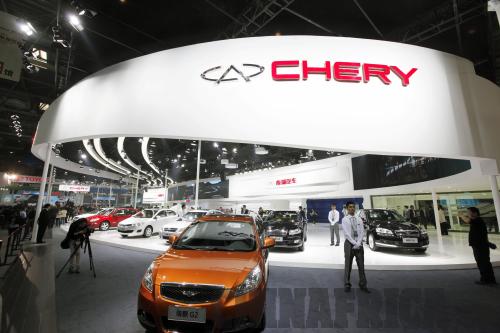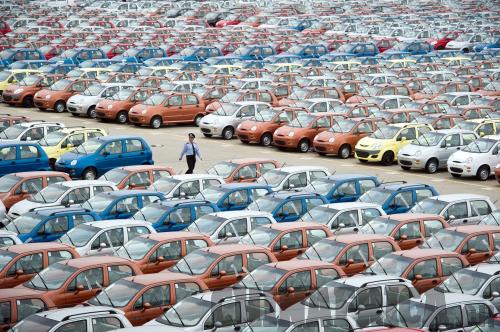| 
Elegant body design, a spacious modern interior and luxurious seats that massage the driver - all features you would associate with pricey high-end German sedans. But Chery Automobile, a leading homegrown manufacturer based in China's Anhui Province, is working hard to change perceptions and turn the luxury car market on its head. Chery's RIICH G6 model includes all the above features while retailing at between 180,000 yuan to 260,000 yuan ($28,000 to $41,000).
The reality, however, is that this luxury sedan, despite having a favorable price-quality ratio, has not been well received by Chinese customers.
"Admittedly, the G6 is equipped with many advanced configurations that will not be available in cars in a similar price range produced by joint-venture automakers. But I prefer to buy a VW PASSAT or Nissan TEANA, as these brands are more trustworthy," Ma Sheng told ChinAfrica. Ma runs a software company in Hefei, central China's Anhui Province, and was considering buying a sedan for the company.
Negative customer feedback relating to the RIICH G6 has embarrassed China's native automakers, who offer an excellent price-quality ratio but lack brand recognition. Unfazed, Chery is forging ahead to find new ways of elevating its brand image and exploring overseas markets.

Rebranding
In the context of a market economy, Chery cannot ignore the changes in consumption trends if it is to survive and develop in the fierce world of auto competition. Currently, urban consumers are upgrading to high-end cars when replacing current models. "With the advantage of favorable price-quality ratio, Chinese self-owned automakers have grown in leaps and bounds during the past decades. But they have to launch higher-end products with more added value to meet the demands of current markets," Zhang Zhiyong, an auto analyst, said in an interview with ChinAfrica.
Having cherished the dream of "growing into a high-end brand," Chery rolled out its self-owned high-end brands of RIICH and RELY in succession, but didn't bring significant elevation to Chery's image. The road to become a world-known brand for Chery seems to be rather bumpy.
Zhang said enterprises misunderstood the concept of high-end, as it is actually a dynamic process.
"A high-end brand will never be achieved only by manufacturing claimed high-end cars, like the RIICH series," said Zhang. He maintained that quality products had to be recognized by consumers so that the brand could acquire the bargaining power among its competitors.
Chery didn't slow down the pace toward its dream because of obstacles. In September, a 12 billion-yuan ($1.9 billion) joint venture between Chery and Jaguar Land Rover (JLR), the world-renowned brand, officially gained approval from China's National Development and Reform Commission. The JLR-Chery venture, to be located in Changshu, east China's Jiangsu Province, will initially manufacture Land Rover SUVs, followed by Jaguars in the second phase. The two sides will share research and development, manufacturing, management and sales knowledge across the joint venture. The planned annual capacity is said to be 130,000 vehicles.
Zhang believed the huge demand for luxury sedans and SUVs in China's burgeoning auto market is what sealed the deal. "The cooperation itself will bring considerable profit for the two sides," Zhang said, noting that Chery will obtain cash flow and later loans from the tie-up to relieve its financial crunch, and learn from the trans-national company's experience in management and product promotion.
"By virtue of cooperating with the world's iconic brands, Chery will upgrade the quality of its products and the image of its own brand, a good move to push forward Chery's goal of establishing a world-known native brand," Zhang said.
|